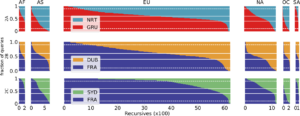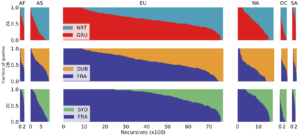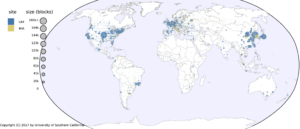The paper “Recursives in the Wild: Engineering Authoritative DNS Servers” will appear in the 2017 Internet Measurement Conference (IMC) on November 1-3, 2017 in London, United Kingdom.

In In Internet Domain Name System (DNS), services operate authoritative name servers that individuals query through recursive resolvers. Operators strive to provide reliability by operating multiple name servers (NS), each on a separate IP address, and by using IP anycast to allow NSes to provide service from many physical locations. To meet their goals of minimizing latency and balancing load across NSes and anycast, operators need to know how recursive resolvers select an NS, and how that interacts with their NS deployments. Prior work has shown some recursives search for low latency, while others pick an NS at random or round robin, but did not examine how prevalent each choice was. This paper provides the first analysis of how recursives select between name servers in the wild, and from that we provide guidance to operators how to engineer their name servers to reach their goals. We conclude that all NSes need to be equally strong and therefore we recommend to deploy IP anycast at every single authoritative.
All datasets used in this paper (but one) are available at https://ant.isi.edu/datasets/dns/index.html#recursives .







